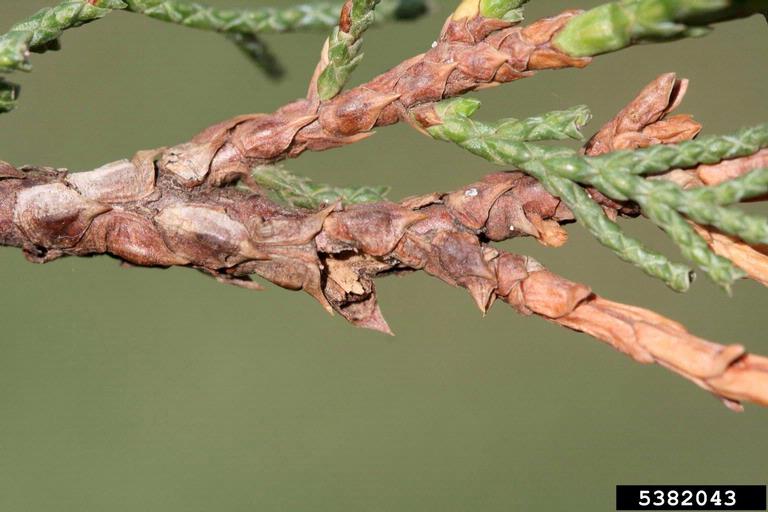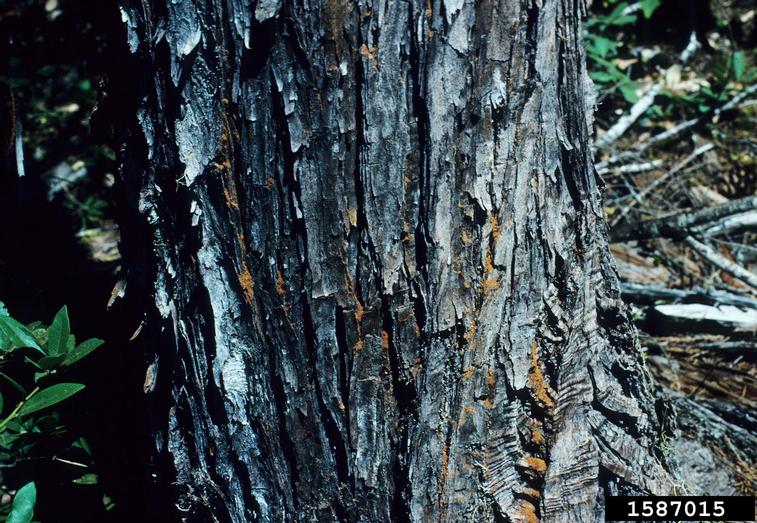Integrated Pest Management
Cedar/Cypress Bark Beetles
Pest Description
- adults: ~ 1/8 inch long; black to reddish brown
- larvae: white grub with a brown head capsule; no legs
Host Plants, Diet & Damage
- Utah and Rocky Mountain juniper; eastern red cedar; Arizona cypress; Leyland cypress; other cypress trees
- feed on tree phloem under bark
- can notch bark
- can girdle branches and stems of stressed trees resulting in discolored or dead foliage
- girdling causes branch or tree dieback or death
- can introduce fungal pathogens
- larvae and adults both cause damage
Biology, Life Cycle & Damaging Life Stage
- overwinter as larvae under tree bark
- typically one generation; two generations may occur in some locations
- adults can attack trees from spring to fall, depending on location (mid- to late-summer for most of Utah)
- prefer damaged or stressed trees
IPM Recommendations
- Reduce stress and keep trees healthy and damage free.
- Do not overwater. Occasional deep irrigation is preferred.
- Prune dead or dying material from affected trees during winter and remove from site.
- Apply insecticides (carbamates; pyrethroids) to the bark on the main stem and branches to prevent damage to susceptible trees in areas of active cedar/cypress bark beetle activity.
For more information, see our Bark Beetles fact sheet.




